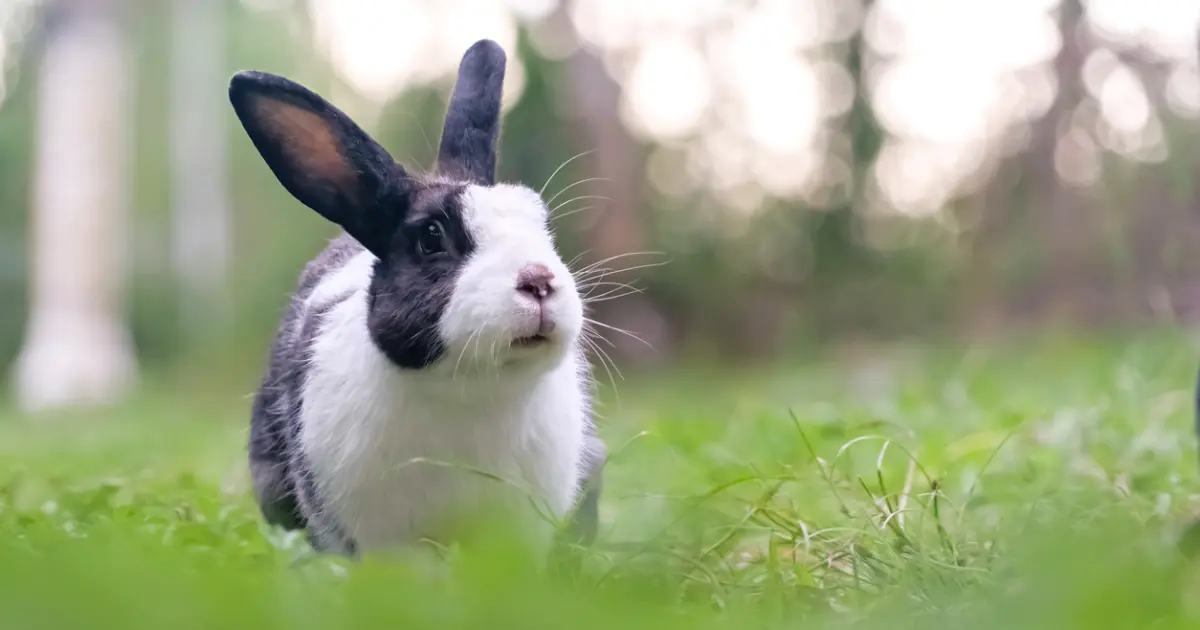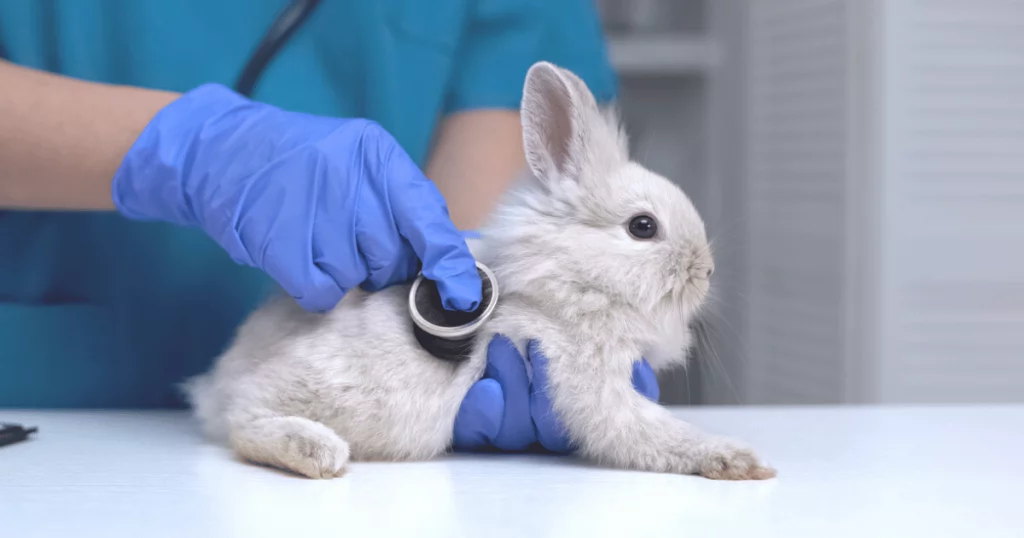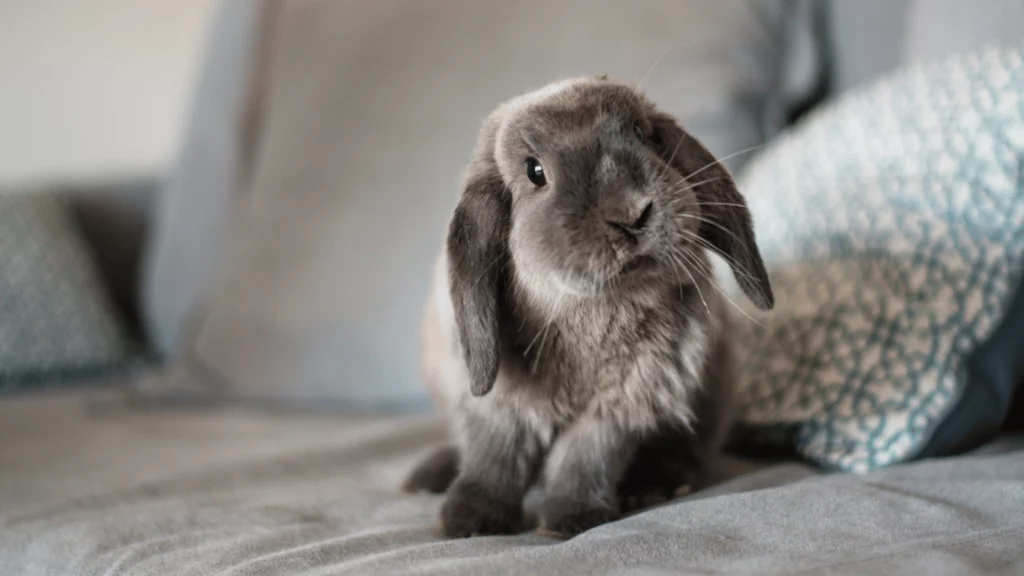
Photo by SPmemory / Getty Images
By Réjeanne Lacroix
It is difficult to resist the soft fur, twitching noses, and bouncy hops of rabbits. No one can dispute their cuteness — that’s for sure! However, the ease of attaining a rabbit as well as mistruths about their life cycle and level of care has led them to become one of the most abandoned house pets. The “dumping” or releasing of pet rabbits outdoors has become a notable animal welfare issue that must be addressed. As 2023 is the Year of the Rabbit, a great opportunity is at hand to highlight these gregarious little creatures as well as educate others so that they can live healthy, safe lives.
Rabbit Care
House rabbits require the same level of care and attention that one would associate with cats or dogs. With innovations in dietary and medical care, house rabbits can live between 8 – 12 years often depending on the breed. Smaller breeds tend to live longer than their larger friends. (Although, extremely popular mini breeds like the Netherland Dwarf, some lionheads and some lops have brachycephalic traits and experience various health problems.)
Indeed, rabbit ownership is a long-term commitment and a serious decision. A myth that rabbits are extremely short lived and require little care consequently sees them gifted to children at Easter and later these same animals are dumped in urban areas or are relinquished to animal shelters. It might be best to note here that rabbits do not make suitable “starter pets” for children as they need gentle, respectful handling due to their fragile frames and prey animal instincts.
Rabbits require a specific diet, appropriate housing, exercise, and socialization. A balanced diet includes unlimited quality hay and water, a smaller portion of rabbit-friendly leafy green vegetables and a limited portion of commercial pellets made from Timothy hay. A diet high in fibre and limited in sugars is important as to not upset their sensitive gastrointestinal (GI) tract. So, it is a fallacy to believe a rabbit can happily live and thrive on carrots, iceberg lettuce or a pellet-heavy diet. Treats should also be given in moderation. Bunnies love bananas and would greedily eat the whole fruit, only to have digestive problems later! Digestive problems (primarily stasis) can become expensive or fatal.
A pet rabbit cannot be locked in a hutch or a cage all day, but a place they can safely call home is needed. Some options include free roam of a rabbit-proofed home, a large exercise pen often used for puppies, or a cage that is large enough for a rabbit to stretch out and have free movement. Bunny-proofing a home is a process that includes making electrical cords out of reach, the removal of poisonous houseplants, and protection of furniture amongst other requirements. Still, despite all this work, rabbits are curious creatures that will sometimes find a way to chew or dig. Sadly, some potential destructive activities by house rabbits consequentially leads some people to dump their pets.

Photo by Motortion / Getty Images
Visiting the Vet and Spaying/Neutering of Rabbits
Not all small animal veterinarians have the experience or knowledge to treat rabbits. House rabbits need to be seen by vets specializing in exotic pets as paradoxical as that sounds. Visits to rabbit-savvy vets are expensive because they require additional levels of specialization, skills, and sometimes equipment. One can then imagine the cost of neutering or spraying a pet that might have cost little to purchase.
Rabbits reach sexual maturity at 3 – 6 months old. Any young bunnies of opposites sexes need to be separated at this point to prevent the inevitable arrival of even more baby bunnies. At this point, most rabbits will show some typical behaviours that are often considered unpleasant such as territorial urine marking, aggression (especially in areas deemed “theirs” such as preferred rooms, cages and at feeding times), and infamous “humping” motions on furniture, people, and objects. All of these unwanted actions have roots in the social communication of rabbits; however, they are considered to be problematic for some families. It is often at this age that rabbits find themselves unwanted, handed over to shelters, or in the worst-case scenario, left to fend for themselves in the outside world.
Rabbits are usually spayed between the ages of 4 – 6 months old. These procedures are the best option to prevent unwanted litters. Spaying and neutering also resolves many of the above-mentioned behavioural problems. It should be noted as well that spaying or neutering rabbits is the best prevention for testicular, mammary, uterine and other reproductive cancers that occur in the species. However, spaying or neutering a rabbit could be a financial burden for those unprepared for the complexities of being a rabbit parent. A quick internet search shows the cost of rabbit spays and neuters ranges from $130 in one locale to $450 for a spay and $250 for a neuter in another location. These costs need to be considered when welcoming a rabbit into a new home.

Photo by David-Prado / Getty Images
The Problem of Abandoning and Dumping Rabbits
Unique requirements, unexpected responsibilities and costs, as well as the ability to have litters quickly means that some people become overwhelmed by house rabbit care. Some believe that since a rabbit must be akin to rabbits spotted in the wild, an efficient solution to deal with an unwanted pet is to simply release it outdoors. This is by far one of the worst outcomes for any rabbit. It is ultimately a death sentence.
Firstly, it must be strongly expressed that house rabbits are not the same as wild rabbits for a myriad of reasons. House rabbits are descended from the European rabbit and have been selectively bred as well as domesticated for centuries. European rabbits are a different genus (Oryctolagus) altogether from wild rabbits (Sylvilagus) and hares (Lepus). Pets do not have the instincts and survival skills to live in the wild. Wild rabbits, such as Eastern cottontails, know how to dig a burrow and evade predators, whilst recently released pets are easy pickings. The addition of traffic accidents, mites, starvation, and disease mean that released rabbits suffer until their untimely end.
In the case that some abandoned house rabbits are able to breed in their new surroundings, their consequent litters become feral. Having some experience living in the wild does not mean that they have suddenly gained the instincts needed to thrive outdoors. Rather, these rabbits provide a continuous supply of easy prey and continue to breed. Feral or European rabbits are considered to be an invasive species in some locales due to unwanted competition with native species and their destruction of important plant life. These rabbits have also been discussed in media stories as many have died due to rabbit hemorrhagic disease (RHDV2) — an especially awful virus — in southern Alberta. Whilst we imagine feral bunnies to live a carefree lifestyle of romantic entanglements and raiding gardens, reality is anything but that.
Having a house rabbit as a companion animal is an extremely worthwhile experience. Their distinctive personalities shine through during social interactions and playtime. Bunnies are notorious for rubbing their chin on every item in a home claiming ownership of their domain! However, since they are a major commitment, it is best to investigate whether a house rabbit is a good fit for your home. There are numerous buns in animal shelters and at small animal rescues waiting for forever homes!
With education and honesty about rabbit requirements, let us hope that fewer rabbits experience the appalling experience of being left to fend for themselves in unsuitable environments.
This article was written by volunteer Réjeanne Lacroix on behalf of The Fur-Bearers. Would you like to be a volunteer writer? Find out more about volunteering by clicking here.
American Rabbit Breeders Association, “Recognized Breeds – ARBA”, https://arba.net/recognized-breeds/
Amy Pratt, “Are Rabbits Good Pets for Children?”, The Bunny Lady, https://bunnylady.com/rabbits-and-children/
Carolyn Kury de Castillo, “‘It’s Horrifying’: 1st Case of Fatal Viral Disease Spreads to Wild Rabbit in Alberta”, Global News, 8 October 2022, https://globalnews.ca/news/9186632/1st-case-of-fatal-viral-disease-spreads-to-wild-rabbit-in-alberta/
House Rabbit Society, “Never Abandon A Rabbit Outside”, 8 March 2017, https://rabbit.org/2017/03/never-abandon-a-rabbit-outside/
Invasive Species Council of British Columbia, “European Rabbit”, Invasive Animal, https://bcinvasives.ca/invasives/european-rabbit/
Laurie Hess and Rick Axelson, “Feeding Your Rabbit”, VCA Animal Hospitals, https://vcacanada.com/know-your-pet/feeding-your-rabbit
Langley Animal Clinic, “Procedure Pricing”, https://langleyanimalclinic.ca/procedure-pricing/
Lizzie Youens, “Why Does My Rabbit Spray Urine?”, VetHelpDirect, 20 August 2022. https://vethelpdirect.com/vetblog/2022/08/20/why-does-my-rabbit-spray-urine/
Long Island Rabbit Rescue, “Bunny Proofing”, https://www.longislandrabbitrescue.org/bunny-proofing/
Lou Carter, “What Is Mounting Behaviour in Rabbits?”, Rabbit Care Tips, 30 September 2022, https://www.rabbitcaretips.com/mounting-behavior-in-rabbits/
